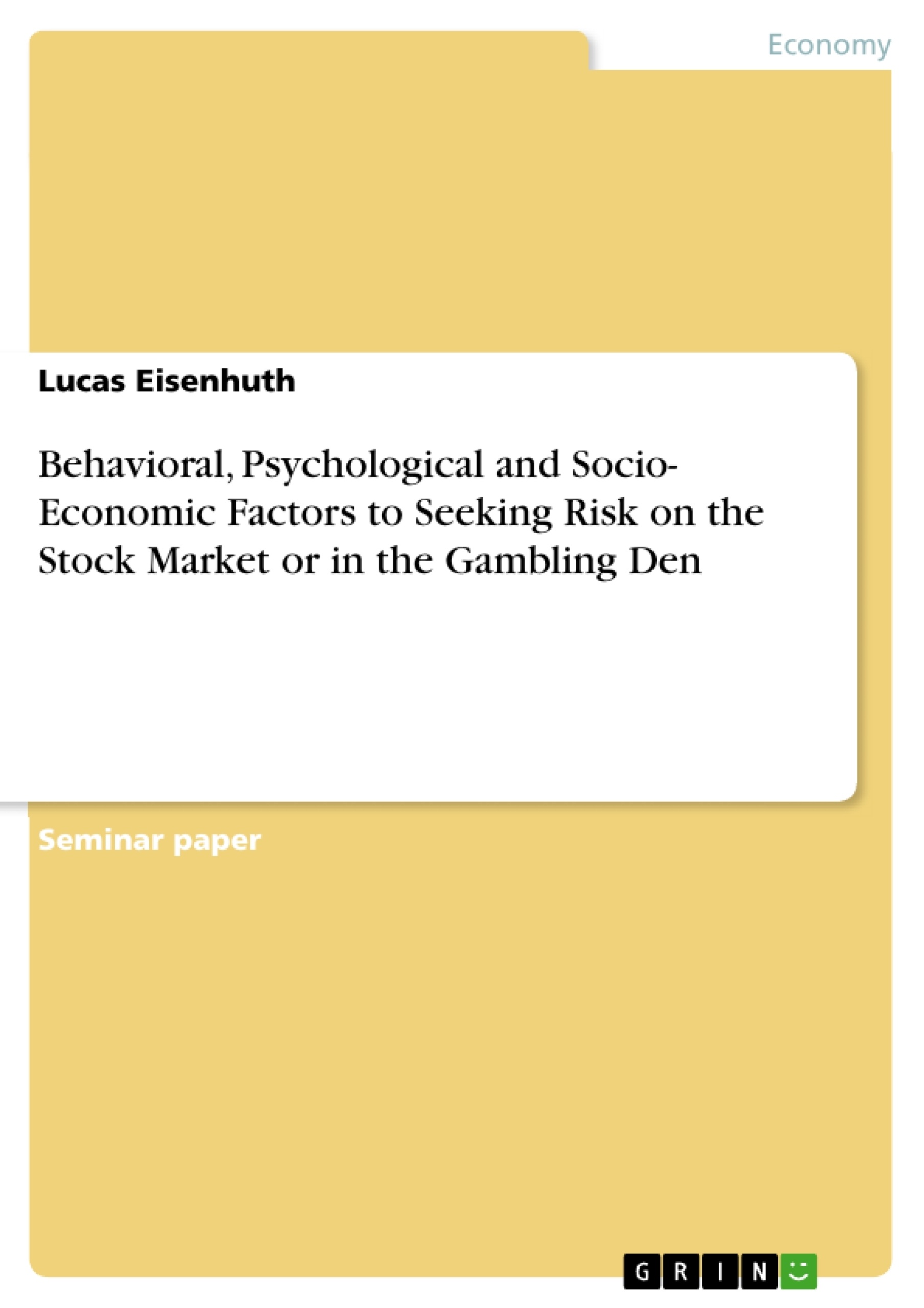What are the motivating factors for retail investors who seek excessive risk on the stock market and how do they relate to those of gambling? Who are these gamblers on the stock market in terms of socio-economic status and personalities? Are they different to those participating in other gambling markets? Which potential similarities exist between these groups? Do people participate in gambling because they prefer risky investments (sensation seeking) or are they misjudging the odds of winning (misled belief)?
To answer these questions the following paper is organized as follows. Section 2 provides the theoretical foundation for the analysis by defining gambling in a traditional sense and providing a framework for identifying gambling on the stock market. Section 3 analyses the motives for traditional gamblers and those on the stock market and links them to certain personality traits as well as socio-economic status. Section 4 briefly sums up the most important findings, compares differences and similarities between the two distinct groups and concludes.
Table of contents
List of tables
1 Introduction
2 Theoretical Framework
2.1 Gambling in a Traditional Sense
2.2 The Relationship of Gambling, Financial Speculation and Investing
2.3 Gambling on the Stock Market
3 A critical Analysis of People's Motives for Engaging in Gambling traditionally and on the stock market and their Demographics
3.1 Framework of the Analysis
3.2 Motivational Factors for participating in Traditional Gambling
3.3 Socio-economic Status and Personality Traits of the Prototypical Gambler
3.4 Motivational Factors for participating in Gambling on the Stock Market
3.4.1 Overconfidence
3.4.2 Recreation or leisure Gambling
3.4.3 Sensation Seeking
3.5 Socio-economic Status and Personality Traits of Stock Market Gamblers
4 Conclusion
Bibliography



